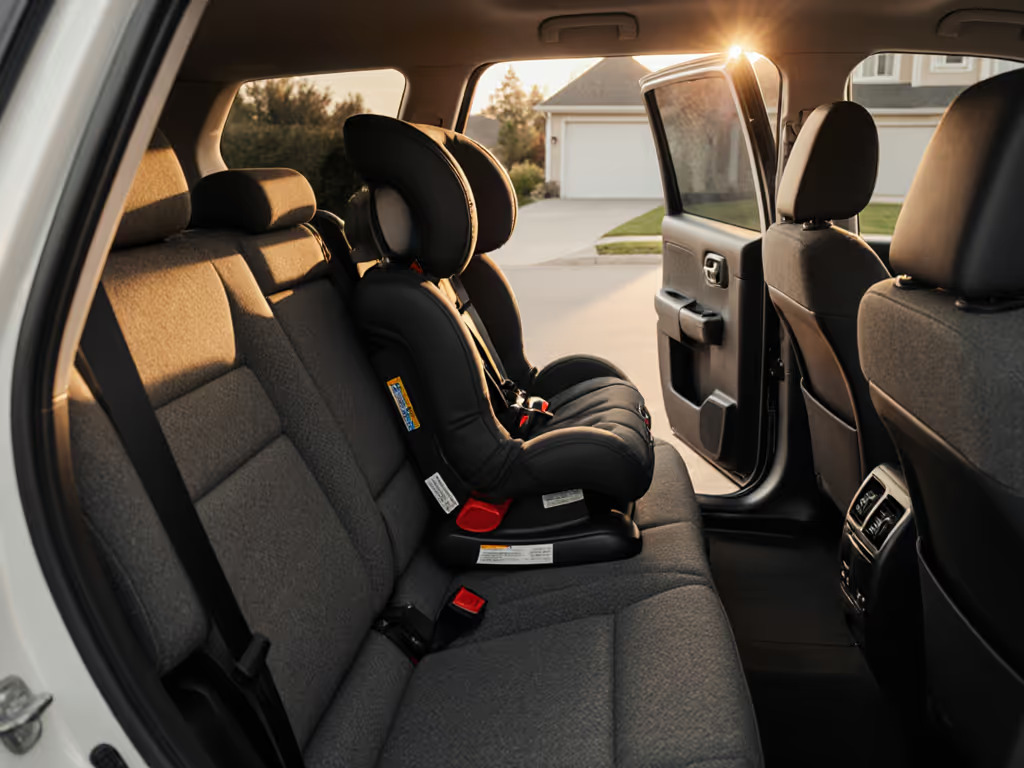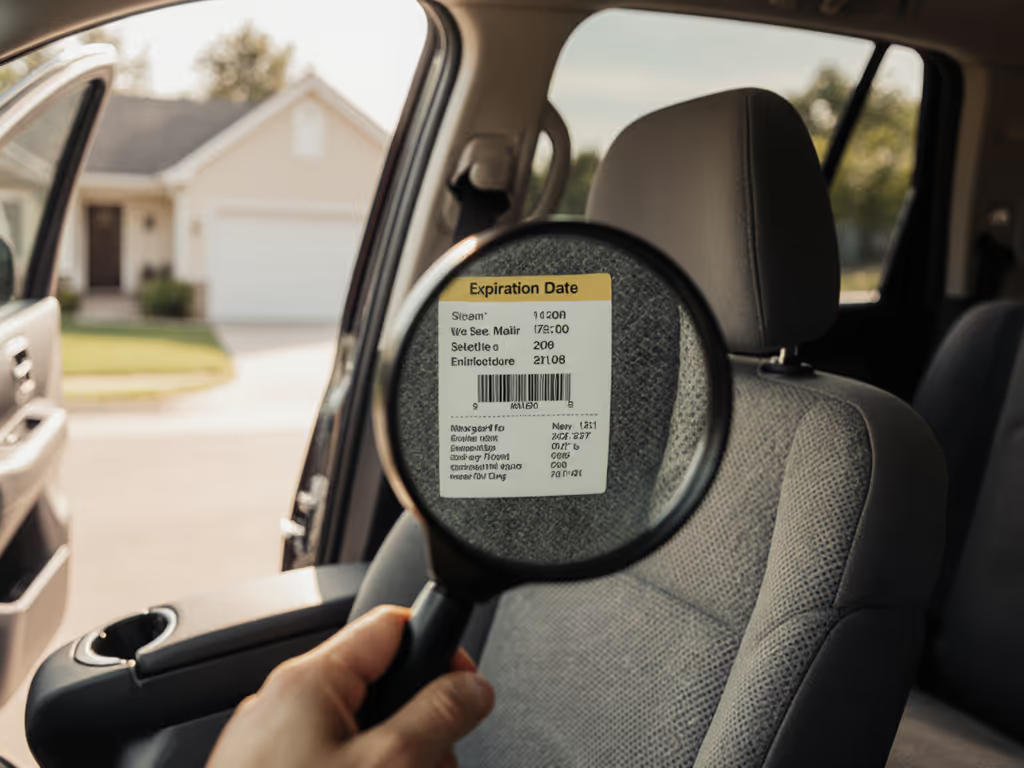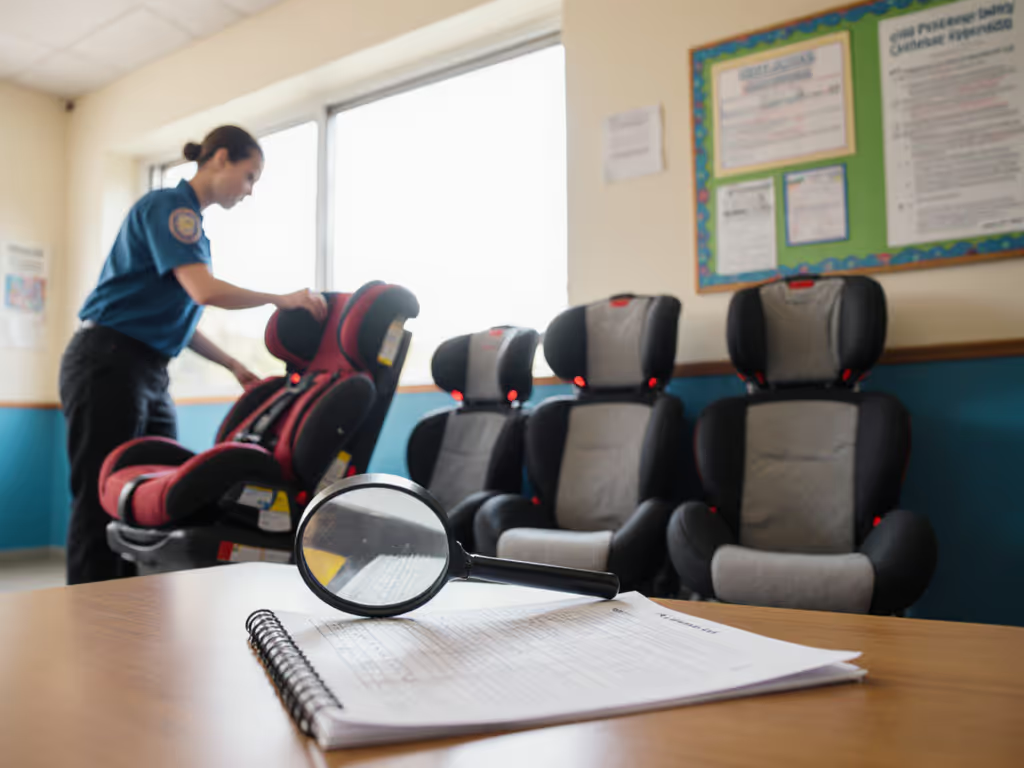
Car Seat Safety Guide 2025: Master Safe Installation Steps

Car crashes remain a leading cause of injury for children, yet a properly installed car seat can reduce serious harm by over 70 percent. Parents want the best protection, but with so many models and complex guidelines, even experienced caregivers can feel lost. This guide breaks down car seat installation into clear, confidence-building steps, helping you match your child's needs and your vehicle for peace of mind on every ride.
Quick Summary
| Key Point | Explanation |
|---|---|
| 1. Measure your child's size accurately | Gather your child's weight, height, and age to ensure a proper car seat fit and compatibility with your vehicle. |
| 2. Choose a quality convertible car seat | Focus on safety features, adjustability, and material quality rather than just price to ensure long-term protection. |
| 3. Install using best practices | Follow vehicle and seat instructions meticulously to ensure a secure installation that minimizes movement and maximizes child safety. |
| 4. Adjust harness and headrest precisely | Ensure harness straps and headrest are positioned correctly to protect your child during every journey as they grow. |
| 5. Perform regular safety checks | Recheck the installation and harness adjustments frequently to maintain safety and address any changes as your child develops. |
Step 1: Assess Your Child's Size and Vehicle Compatibility
Before installing a car seat, you need a precise roadmap tailored to your child's specific measurements and your vehicle's unique configuration. This step ensures maximum safety by matching your child's weight, height, and developmental stage with the most appropriate car seat type and installation method.
Start by gathering three critical measurements: your child's current weight, height, and age. Most car seat manufacturers provide clear weight and height ranges for each seat type. Grab a flexible measuring tape and record these numbers carefully. Weigh your child without shoes and measure their height from the floor to the top of their head while standing straight. Compare these measurements against recommended car seat guidelines from safety organizations like the National Highway Traffic Safety Administration (NHTSA).
Vehicle compatibility is equally crucial. Not every car seat fits perfectly in every vehicle. Check your vehicle's owner manual for specific instructions about car seat anchoring points and recommended installation zones. Some vehicles have lower anchor points called LATCH (Lower Anchors and Tethers for Children) systems that simplify installation. Measure the actual width of your back seat and compare it against the car seat base dimensions to confirm a proper fit. Tight spaces can compromise safety installation.
Pro Tip: When in doubt, schedule a free car seat inspection with a certified child passenger safety technician who can verify both your child's measurements and vehicle compatibility in person.
Your next step will involve selecting the right car seat category based on these precise measurements and compatibility assessments.
Step 2: Select the Ideal Convertible Car Seat for Your Needs
Choosing the right convertible car seat requires strategic thinking beyond just picking the most attractive model. Your goal is to find a seat that provides maximum safety, comfort, and long term usability while matching your specific vehicle and child's developmental needs.
Start by evaluating key performance criteria from expert testing like those conducted by Car and Driver and Automoblog. Focus on three primary assessment areas: safety features, adjustability, and material quality. Safety features should include robust side impact protection, five point harness systems, and clear weight range indicators. Adjustability matters tremendously look for seats with multiple recline positions, easily adaptable shoulder strap heights, and smooth transitions between rear facing and forward facing configurations. Material quality determines durability consider fabrics that are breathable washable and resistant to spills and wear.
Price point matters but should not be your primary consideration. While budget friendly options exist research shows that investing in a high quality convertible car seat can provide significantly better protection. Seek seats that meet or exceed federal safety standards and have undergone rigorous independent testing. Check for certification marks from organizations like the Juvenile Products Manufacturers Association (JPMA) which validate comprehensive safety standards.
Pro Tip: Always register your car seat with the manufacturer to receive critical safety updates and recall notifications directly.
Your next step will involve understanding precise installation techniques to ensure your chosen seat provides maximum protection.
Step 3: Install the Car Seat Using Best Safety Practices
Successful car seat installation requires precision and careful attention to detail. Your primary objective is creating a rock solid secure environment that minimizes potential movement and maximizes protection during every journey.
Begin with selecting the optimal vehicle location typically the back seat center position provides the safest placement. Carefully read both your vehicle owner's manual and car seat manufacturer instructions to understand specific anchoring requirements. The Montgomery County safety guide recommends checking for two critical installation methods lower anchors or seat belt routing. When using lower anchors confirm that the attachment points can support the car seat weight and that connections are tight with minimal side to side movement. If using seat belt installation press the seat firmly into the vehicle seat while pulling the belt tight to eliminate slack. Perform the inch test by grabbing the car seat near the belt path and attempting to move it less than one inch in any direction.
Accuracy matters more than speed during installation. Take time to verify each connection point ensuring the car seat sits at the correct angle particularly for rear facing configurations. Most convertible seats have built in angle indicators helping you confirm proper positioning. If the seat feels unstable or rocks more than an inch when tested add a rolled towel underneath the base to achieve appropriate leveling.
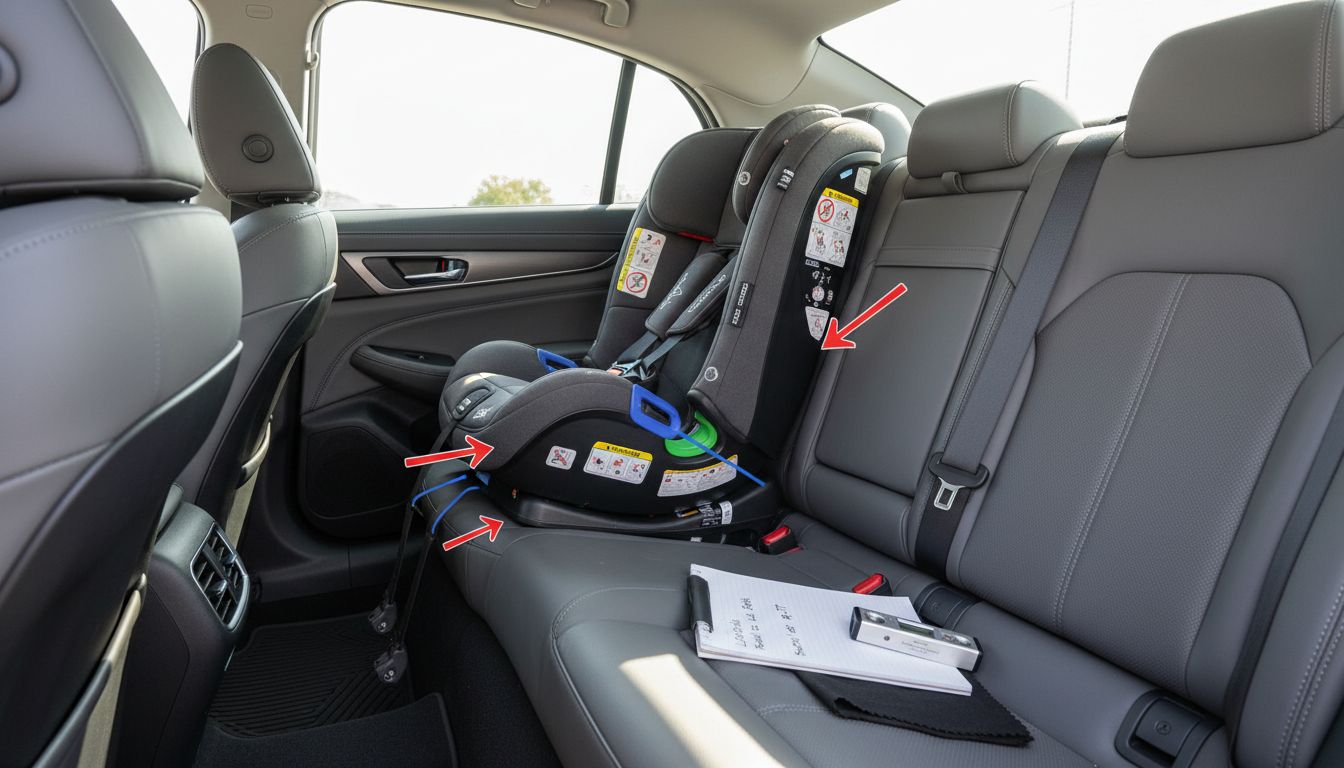 Remember that proper installation can reduce serious injury risk by up to 71 percent according to national safety research.
Remember that proper installation can reduce serious injury risk by up to 71 percent according to national safety research.
Pro Tip: After installation have a certified child passenger safety technician double check your work for maximum confidence.
Your next step involves understanding proper harness adjustment to ensure your child remains secure throughout the journey.
Step 4: Adjust Harness and Headrest for Secure Fit
Perfecting your child's car seat harness and headrest positioning is a critical safety step that requires precision and careful attention to detail. Your goal is creating a snug secure restraint system that protects your child during every journey while accommodating their ongoing growth and development.
Begin by checking the harness straps. For rear facing seats ensure the straps are at or below your child's shoulder level. For forward facing configurations position straps at or slightly above shoulder height. When you buckle your child test the harness tightness using the pinch test. If you can pinch excess fabric at the shoulder area the straps are too loose. A properly adjusted harness should lie flat against the body with no slack. Most convertible seats feature multiple shoulder strap height positions allowing you to adjust as your child grows. Press the release mechanism and slide the straps up or down to match your child's current height ensuring symmetrical positioning.
The headrest plays an equally important role in overall protection. Adjust the headrest so the top of the cushioned area aligns with the top of your child's head. For younger children this might mean using additional head support padding. Check that the headrest provides complete support without pushing your child's head forward. A well positioned headrest prevents neck strain during sudden stops and helps distribute impact forces more evenly across the body. Remember that proper harness and headrest adjustment can significantly reduce injury risk by maintaining optimal body alignment during potential collisions.
Pro Tip: Recheck harness and headrest positioning every few months as children grow rapidly and can quickly outgrow their current settings.
Your next step involves understanding ongoing maintenance and safety checks to ensure continued protection.
Step 5: Verify Installation and Perform Safety Checks
The final and most critical phase of car seat installation involves comprehensive verification and ongoing safety assessment. Your objective is to transform careful installation into a guaranteed protective environment for your child through meticulous checking and rechecking.
According to Montgomery County safety guidelines conduct a thorough multi point inspection immediately after installation. Start with the inch test grab the car seat near the belt path and attempt to move it side to side and front to back. A properly installed seat should not shift more than one inch in any direction. Check all attachment points whether using lower anchors or seat belt routing ensuring each connection feels tight and secure. Verify the seat angle particularly for rear facing positions using built in angle indicators or leveling tools. Most convertible seats have clear visual markers showing the correct positioning range. Pay special attention to harness strap positioning confirming they remain at the correct height relative to your child's shoulders and lie flat against the body without twisting.
Remember that car seat safety is an ongoing process not a one time event. Plan to recheck your installation every month and after any significant event like a car accident or long distance travel. Children grow rapidly and seat configurations change which means what worked last month might need adjustment now. Watch for signs of wear on straps and connections and inspect for any visible damage or stress points.
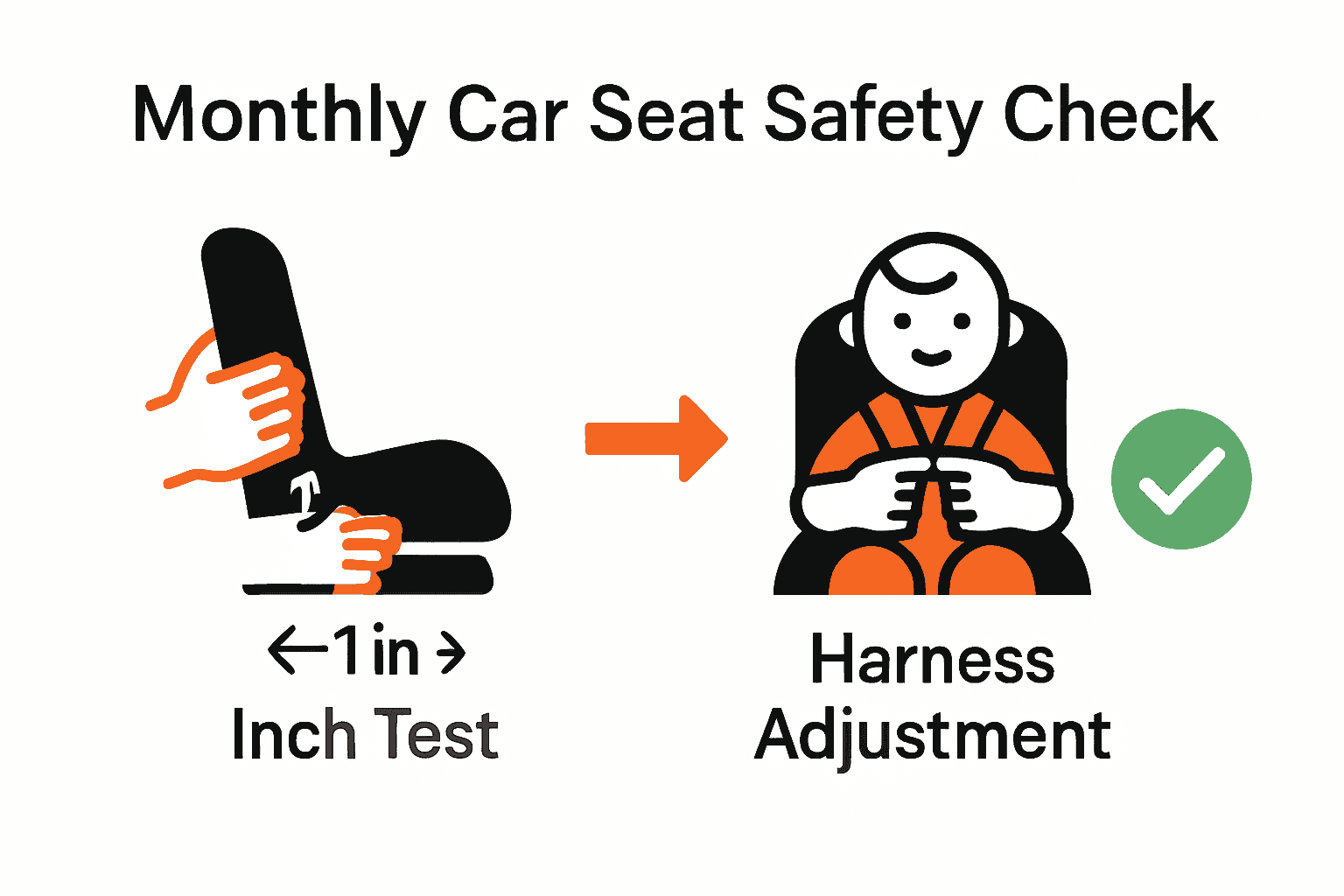 Some manufacturers recommend complete seat replacement after certain incidents even if no visible damage exists.
Some manufacturers recommend complete seat replacement after certain incidents even if no visible damage exists.
Pro Tip: Consider scheduling a professional safety inspection with a certified child passenger safety technician twice a year to ensure continued optimal protection.
Your next step involves understanding how to maintain your car seat for long term safety and reliability.
Ensure Your Child’s Safety with Expert Guidance and Perfect Fit
Mastering the detailed steps of car seat installation like assessing size, choosing the ideal seat, and securing harnesses can feel overwhelming. Your top priority is protecting your child through precise installation and ongoing checks. At the heart of these challenges is the need for reliable, personalized advice that matches your child’s growth and your vehicle’s setup.
Fits for Years Seats is designed just for parents and caregivers like you. Explore comprehensive, research-backed car seat reviews and buying guides that focus on safety standards, ease of installation, and long-term comfort. Whether you want to verify your installation techniques or find the best convertible car seat tailored to your child’s size, our site has the expert insights you need now. Don’t leave your child’s safety to chance. Visit Fits for Years Seats and start mastering every step with confidence. Discover more about safe installation practices and find the perfect match for your family at Fits for Years Seats. Your next journey begins with knowledge and peace of mind.
Frequently Asked Questions
How do I assess my child's size for car seat installation?
To assess your child's size, measure their weight and height accurately. Weigh your child without shoes and measure their height standing straight; compare these measurements against the required ranges in car seat guidelines to ensure a proper fit.
What are the critical steps for selecting a convertible car seat?
Select a convertible car seat by evaluating safety features, adjustability, and material quality. Focus on finding a seat with robust side impact protection and multiple shoulder strap positions to accommodate your child's growth.
How can I ensure my car seat is installed securely?
To ensure secure installation, use the inch test by trying to move the car seat near the belt path; it should not shift more than one inch in any direction. Follow both your vehicle's and car seat's manuals to check all connection points for tightness and correct angle positioning.
What is the proper way to adjust the harness and headrest for my child?
Adjust the harness straps so they are at or below your child's shoulder level for rear-facing, and at or above for forward-facing. Make sure the headrest aligns with the top of your child's head and that the harness lies flat against their body without slack.
How often should I perform safety checks on my car seat?
You should perform safety checks on your car seat every month and after travel or significant events. Regularly inspect for proper installation, harness positioning, and signs of wear to maintain optimal safety for your child.
Why is professional inspection of my car seat recommended?
A professional inspection ensures that your car seat is installed correctly for maximum protection. Schedule an inspection with a certified safety technician at least twice a year to confirm that everything remains secure and adjusted appropriately.



